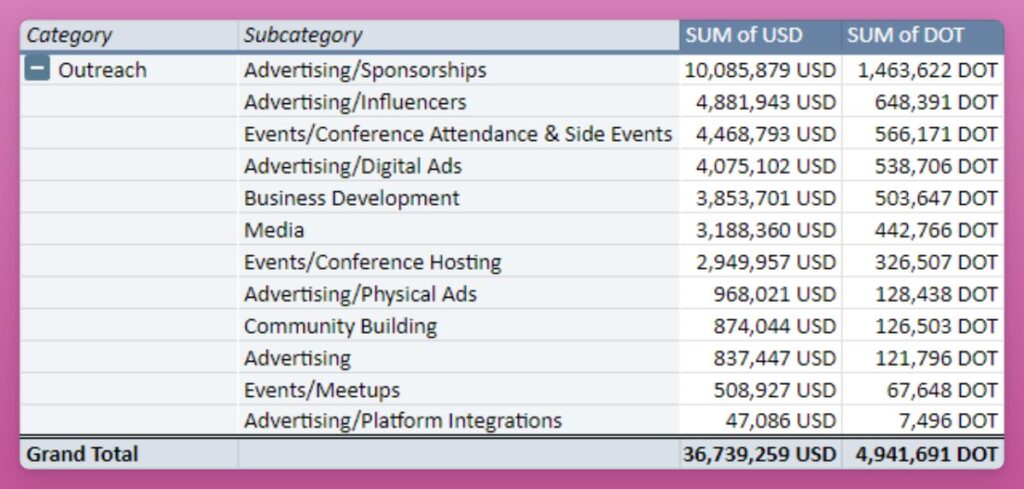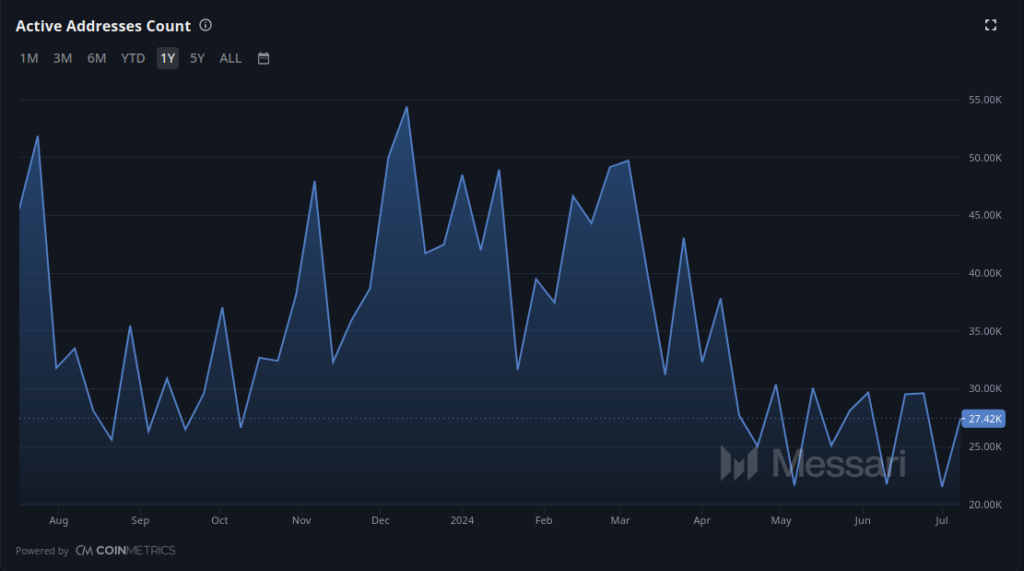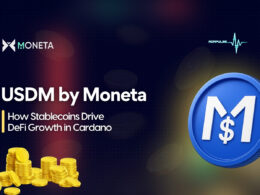There seems to be a consensus in the Cardano community that the reason why the price action of $ADA is not as good as other competing projects, it’s due to a lack of marketing. I, however, think that it’s due to a liquidity problem or lack thereof.
Cardano has not been portrayed in a good light by the crypto mainstream media, that is true, but there’s not such a thing as bad publicity. MBLM, the brand intimacy agency, in their 2022 report ranked Cardano number one in the crypto category. According to them, the Cardano community has a stronger bond with the brand than even Bitcoin or Ethereum. If marketing was the problem, Cardano wouldn’t be able to rank as high as it did.

What is marketing after all? Originally called commercialization, it’s the act of finding the appropriate customer for your service or product. Depending on the nature of the product or service you are trying to sell, different strategies and mechanisms to make it known to potential customers will apply.
Bitcoin & Wikileaks
In the case of crypto, which is still a very niche market, the best marketing strategy continues to be word-of-mouth. Or did you think Satoshi Nakamoto paid for ads? Of course not, it was all organic adoption. The best Bitcoin marketing stunt probably was when PayPal closed Wikileaks’ account and had to resort to BTC donations instead.
Although at first Satoshi was not happy with Wikileaks adopting Bitcoin for their financial support since the bitcoin blockchain was still in its infancy. It wasn’t until June 2011 when Wikileaks would establish a Bitcoin payment channel. Almost six months later.

The publication of “Collateral Murder” by Wikileaks on 5th April 2010, propelled both Wikileaks and Julian Assange to the world stage. Consolidating Julian Assange’s place in the Cypherpunk Wall of Fame. There has been much discussion regarding the relationship between Satoshi Nakamoto and Julian Assange. There’s no doubt that they were in communication during the 2010-2011 events, but it’s also possible they knew each other before then since they were both members of the Cypherpunk movement.
Without Bitcoin, Wikileaks couldn’t have survived the long legal battles or managed to keep the foundation operational and their server running. The following tweet by the Defend Assange Campaign account from 14th October 2017, is an amusing taunt at the corporations that set-up the illegal banking blockade against Wikileaks. In a true backfire fashion without them Wikileaks and even Bitcoin may not have survived or be the institutions that they are today.

The same way Laszo Hanyeczs purchased two pizzas with 10,000 bitcoin in 2010, marking the first bitcoin transaction for real life goods. Wikileaks accepting bitcoin donations and relying on it for their financial survival, shows that the best marketing is using this technology for its intended purposes. A peer-to-peer electronic cash system without intermediary or centralized authority.
Polkadot’s Treasury
The recent debacle of the Polkadot treasury is a clear example that throwing money at a problem doesn’t fix it. Even less so if the assessment of the problem is incorrect to start with. Twitter/X user @DefiIgnas posted on July 1st an analysis of the Polkadot treasury spending of the last six months.

From 10 million dollars in sponsors, to 4.8 million in influencers and another 4 million in digital ads. And yet $DOT price is down 25% in the last six months. But let’s not look just at price action, after all what’s important is the on-chain data of real users. According to Parity Data Dashboards the number of active accounts in December 2023 was 232k, while in June 2024 it was 82k. That’s a 62% decline.

In the second tweet, @DefiIgnas states that Polkadot spent $86 million in the last six months. While the treasury manages 245 million dollars, at this burn rate it will go bankrupt in less than two years. The problem, in my opinion, is the “Silicon Valley mentality” that has infected the cryptoverse for some time now. Without even getting into the Venture Capital backed crypto projects, which are only created and funded to suck up liquidity from uneducated people. The idea that a blockchain is justified in spending 18 million dollars on sponsors, influencers and ads is laughable. Instead of spending that money on actually solving a real life problem.
This is not to throw shade at Polkadot, Cardano is also experiencing a similar drop in active address. According to Messari December 2023 had a high of 54k and in June 2024 it had dropped to 29k, a 45% decline. The difference is Cardano treasury didn’t spend 36 million dollars in outreach.

As stakeholders of the Cardano blockchain, we must take this opportunity and learn from the mistakes in the handling of the Polkadot treasury. Otherwise, with the introduction of governance action with the Chang hard fork and the possibility to request funds from the treasury will be the beginning of the end.
Cardano’s Liquidity
We have seen two distinct examples of marketing outreach, Bitcoin’s organic growth and Polkadot’s “throw money at the problem” approach. Of course, one could say that Bitcoin has first mover advantage and therefore is much more recognizable as a brand worldwide than Polkadot. However, the answer to the problem of how to get more adoption is still the same. Solve a real life problem and people will use it. Easier said than done right?
Cardano’s goal of being the financial operating system of the world should give you the first hint of what’s needed. Liquidity, the lifeblood of any market. And if your goal is to be the financial operating system of the entire world, you are going to need a lot of it. But how do we attract this liquidity? That’s the real question we should be asking, not which nonsense marketing stunt to perform next.
Many discussions have been had regarding the two main stablecoins in the cryptoverse, Tether’s USDT and Circle’s USDC. My personal opinion is that if Cardano wants to change the world for real, and it’s not just a marketing buzz phrase, then we need to do it our way. Both Tether and Circle have been intervened by the US government and have been forced to bend the knee or else.
This corrupt symbiotic relationship goes both ways, the US government needs Tether and Circle because they are the two biggest buyers of Treasury Bills. And since the Federal Reserve is a private bank, a Central Bank Digital Currency (CBDC) won’t fly with Wall Street’s bankers. So in exchange for allowing them to continue to operate, Tether’s USDT and Circle’s USDC will act as proxy-CBDCs. After all, they have all the capabilities that a totalitarian regime would want: programmability, surveillance and the ability to freeze funds.
That’s why when Djed launched on Cardano, I was very happy about it. A decentralized algorithmic over-collateralized stablecoin backed by $ADA and not Treasury Bills from the US government. Ergo was able to launch the same protocol almost a year before Cardano with the name of AgeUSD. However, at the time of writing this article $DJED has a market cap of $3 million dollars and $SIGUSD of only $344 thousand dollars.
Many explain the unsuccessful nature of both implementations on the implosion of Terra Luna and their infamous algorithmic stablecoin $UST. Even though their architecture and inner workings are completely different, for the average person hearing the phrase “algorithmic stablecoin” brings back bad memories. Perhaps a marketing opportunity here would be to find a way to bring across the message that $DJED and $UST are nothing alike.
On the other hand, $DJED liquidity is constrained by the $ADA liquidity needed to act as collateral. Investors need to have a reason to mint $SHEN, the reserve currency, which gives them a leverage position on $ADA. Perhaps the problem was launching the project in the middle of a bear market where it is harder to find investors willing to risk their capital on more risky assets. We can hope that when a proper bull market arrives again for Cardano, and new all-time-highs are made, investors will look at $DJED and $SHEN with different eyes.
The second organic stablecoin from the Cardano ecosystem is $IUSD by Indigo Protocol. In this case, this is a synthetic asset of the US dollar. Meaning it’s an asset that imitates another asset performance. However, Indigo has had problems with the peg between $IUSD and USD due to the relative low collateralization, compared to $DJED, and the fact that investors that mint $IUSD don’t have any incentive to close their collateral debt position (CDP) contract when the value of the collateral goes down relative to USD.
The third organic stablecoin is $USDM from Moneta, the newly rebranding of Mehen. In this case, it’s a traditional stablecoin backed 1:1 with real US dollars deposited in a bank account. However, the minting is only allowed in certain US states where Moneta has banking licenses and requires KYC as well. These two roadblocks are probably the reason why $USDM is also struggling to gain market cap, which is currently sitting at $4.8 million US dollars.
The new up and coming stablecoin is $USDA from Anzens. A collaboration between Emurgo, one of the founding entities of Cardano, and the institutional-grade trading desk Encryptus. Which offers their services through Africa, Middle East, Asia, and LATAM. Encryptus is licensed in Europe as a Virtual Asset Service Provider (VASP). $USDA like $USDM will be backed by US dollars and Treasury Bills held in a bank account. To be able to mint and burn $USDA users will need to complete the KYC procedure.
I believe that with the organic stablecoins from the Cardano ecosystem we are covering all our bases. $DJED offers an algorithmic over-collateralized stablecoin backed by $ADA, for the real cypherpunks. $IUSD, although it still struggles to keep the peg with the USD, covers the synthetic stablecoin choice. $USDM and $USDA cover the more traditional stablecoin backed 1:1 with US dollars and Treasury Bills. One for USA citizens and the other for Europe, Middle-East, Asia and Latam. The only thing missing is to attract the liquidity from other ecosystems and traditional finance once the money printer gets turned back on.
Conclusion
Polkadot’s treasury spending has shown us that throwing money at a problem doesn’t solve it. Even less if the analysis of the problem is incorrect. Bitcoin teaches us that real growth comes from solving real life problems and creating real value. Cardano has come a long way since smart contracts first launched in August 2021. Developers and builders have been working hard throughout the bear market, in which all of these stablecoins were released. It’s important to understand that neither Cardano nor crypto exist in a vacuum and macroeconomics plays a huge role. Now more than ever with the introduction of ETFs and the full participation of institutional investors and Wall Street titans. That’s why it’s important to remember our true goal of being the financial operating system of the world, taking Cardano to the margins and changing the world for the better of humanity.










